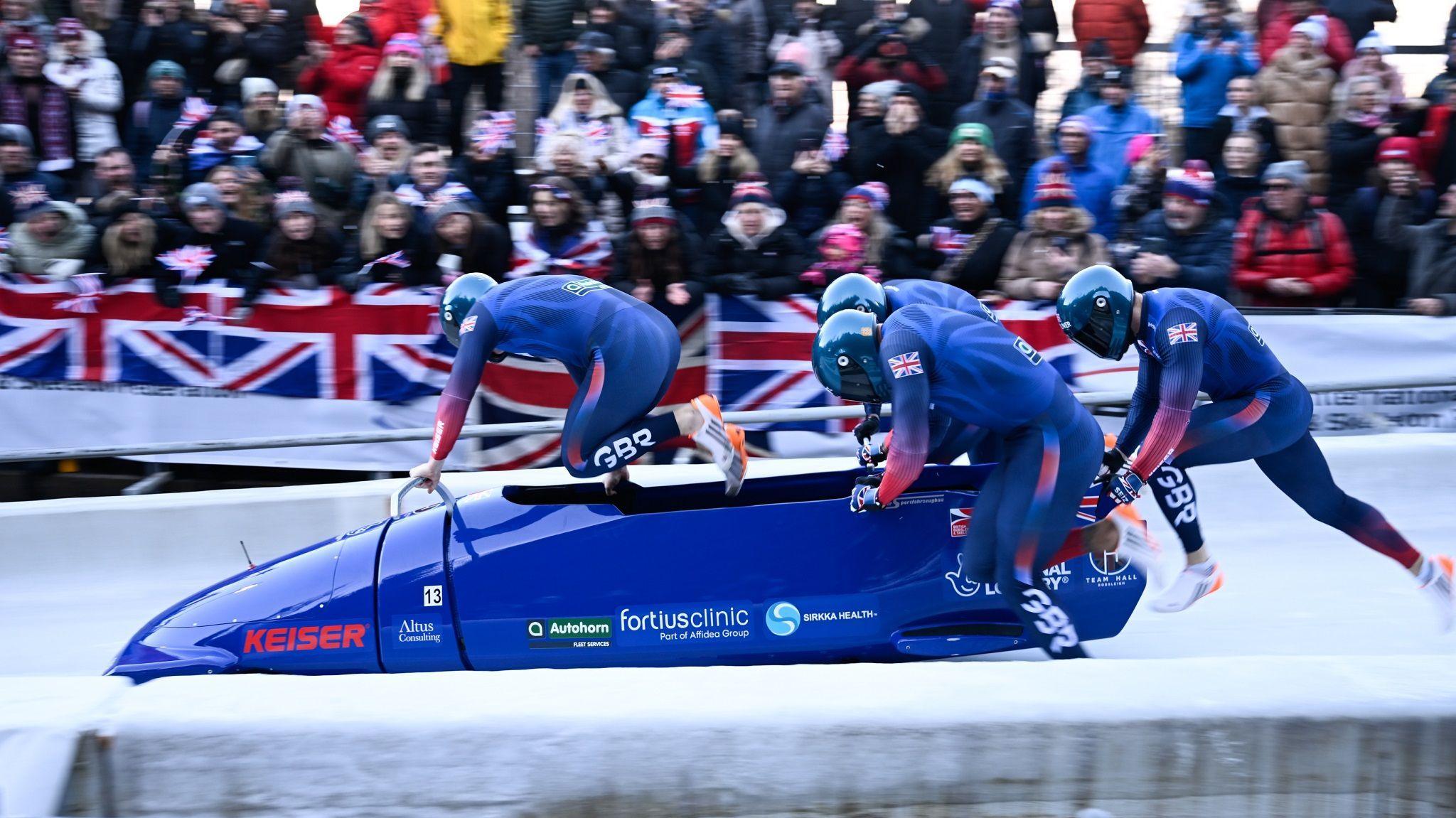The science behind the success of GB bobsleigh
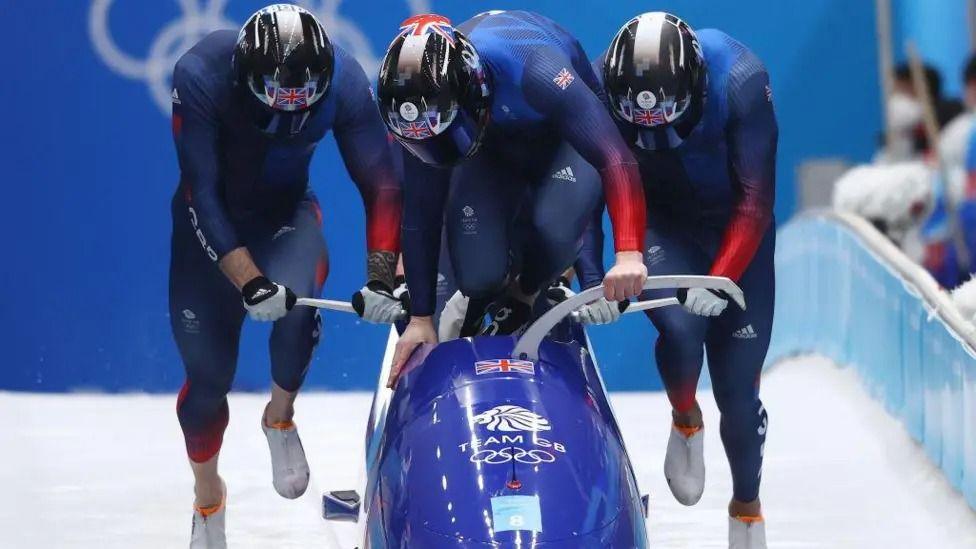
Ahead of the weekend GB's men are second in the overall standings of the four-man event
- Published
In a sport where fractions of a second can be the difference between glory and agony - it is science that is helping to make that difference for British Bobsleigh.
This weekend in Lillehammer, Norway, four men will ultimately be responsible for guiding Great Britain towards gold in the final leg of the bobsleigh World Cup series.
But more than 1,000 miles away in Southampton, hours of research in a university's wind tunnel has guided the team's success.
BBC South Sport Editor Lewis Coombes reported from the wind tunnel at the University of Southampton that has been used to make the GB bobsleigh team more aerodynamic
Brad Hall, Taylor Lawrence, Arran Gulliver and Leon Greenwood will be the men inside the four-man bobsleigh.
So how have experts in aerodynamics turned them into contenders alongside countries with more money and better facilities?
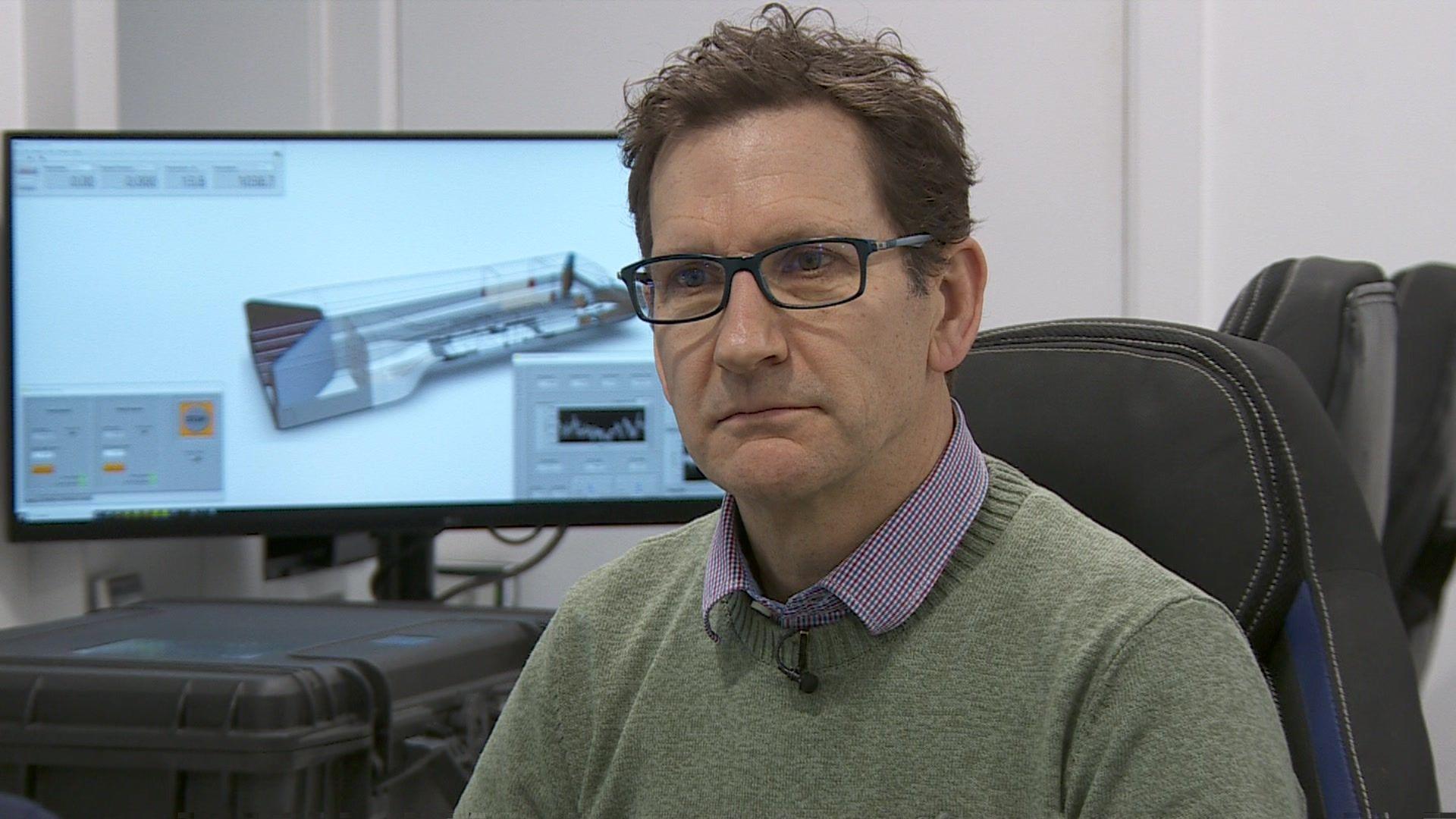
Lead Researcher Martyn Prince said the wind tunnel allows the team to work on reducing drag on the bobsleigh
The University of Southampton's wind tunnel has previously been used by Formula 1 teams and Olympic cyclists to test aerodynamics.
Most recently aerodynamic consultants from Oxfordshire have hired the site to work with GB bobsleigh.
Martyn Prince, a lead researcher at the Wolfson Unit, is working with the GB bobsleigh team alongside consultants from Oxfordshire.
And he said their work is all geared towards improving speed: "What we measure here can go into other numerical tools which will then predict how fast they get can get down the track."
Mr Prince added that the ultimate goal of the research is to reduce drag - a force of air that slows down an object moving through it.
"Less drag basically means you go faster. When races are won by less than point one of a second, marginal gains in terms of drag will help you win."
No more so was this demonstrated than when Great Britain beat hosts Germany by 0.19 seconds last month to win a gold medal at the World Cup event in Winterburg.
Which they then backed up with further World Cup gold medal success in leg five, held in Switzerland just weeks later.
Last weekend the team followed that up with bronze medals in both the two-man and four-man events in World Cup bobsleigh event in Lillehammer.
It was a fifth podium finish in six races in the four-man, helping Hall's team remain second in the overall standings.
Hall and Lawrence are third in the two-man standings and heading for a second overall medal in that discipline in three years.
'Controlled environment'
Mr Price says the key to using a wind tunnel is its controlled environment - allowing researchers to do a number of tests in a short space of time.
"We can maintain the windspeed, the temperature and the environmental conditions [of a bobsleigh run]".
"With a bobsleigh [on a track] you can only do one run, so you can only answer one question as part of that.
Whereas here... we don't have to take the bobsleigh back up the hill and push it down again".
The drive to reduce drag starts in the wind tunnel, but finishes in the bobsleigh, where the smallest of movements could cost a team dearly.
"For us, we're about keeping nice and low, and nice and still," athlete Taylor Lawrence said. "And then ultimately, it's down to Brad to drive us down."
The team includes driver Brad Hall, from West Sussex, who has described the team's success as a 'David and Goliath' story.
"When we're winning races it's like we shouldn't really be there, we're there against the odds" he said previously.
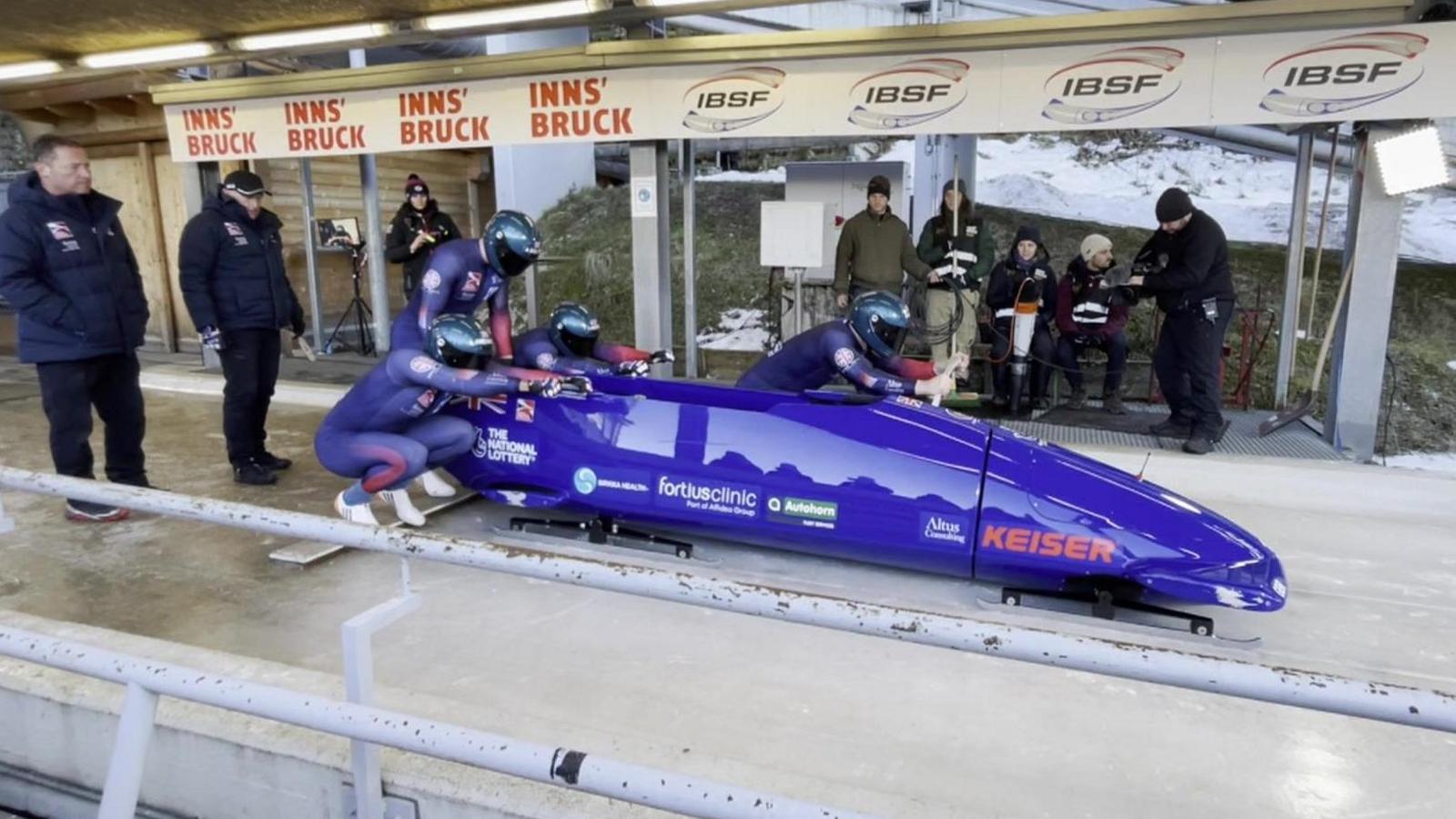
Brad Hall, Taylor Lawrence, Arran Gulliver and Leon Greenwood in four-man bobsleigh action
The team's research has supported the success of athletes with relatively little experience.
Berkshire athlete Leon Greenwood made the national bobsleigh team just months after trying the sport for the first time, after the Newbury-based sprint coach sustained a serious injury.
In Lillehammer, the team is on track to be on the podium in both the two-man and four-man sleds.
Should another gold medal be captured by the team, efficiency of speed from both man and machine will have played a crucial part.
Get in touch
Do you have a story BBC Hampshire & Isle of Wight should cover?
You can follow BBC Hampshire & Isle of Wight on Facebook, external, X, external, or Instagram, external.
- Attribution
- Published9 February
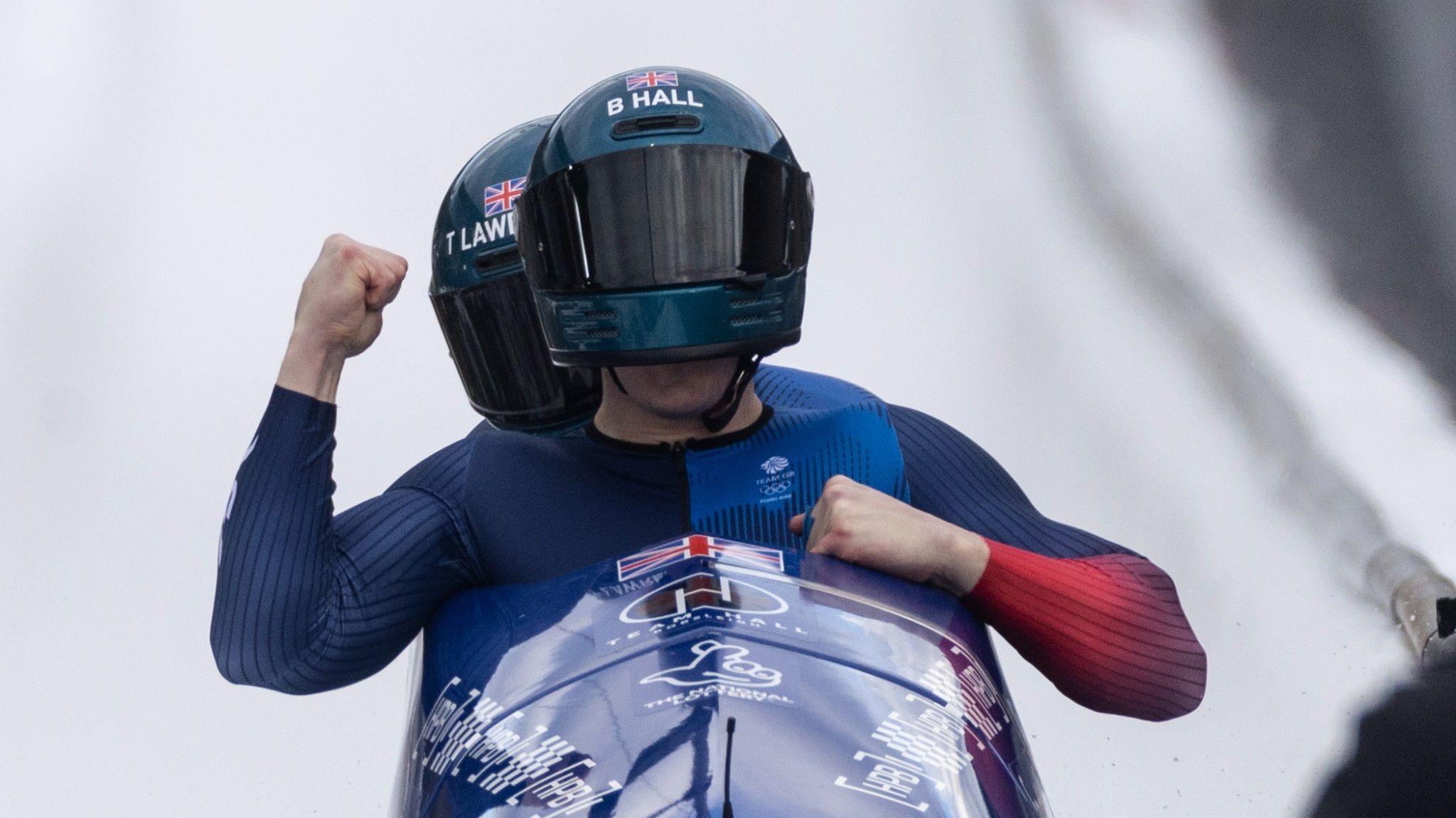
- Attribution
- Published7 February
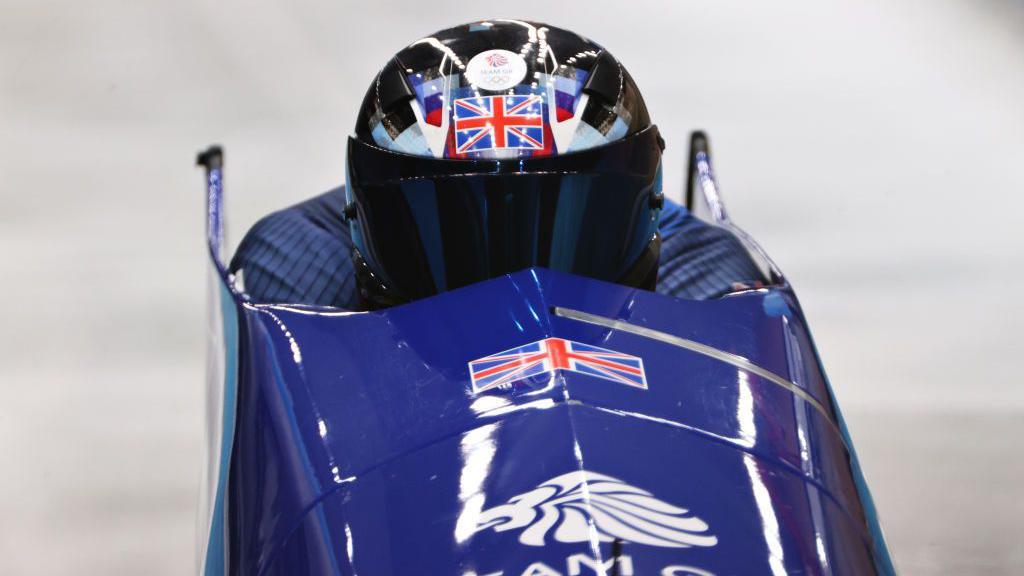
- Attribution
- Published25 January
